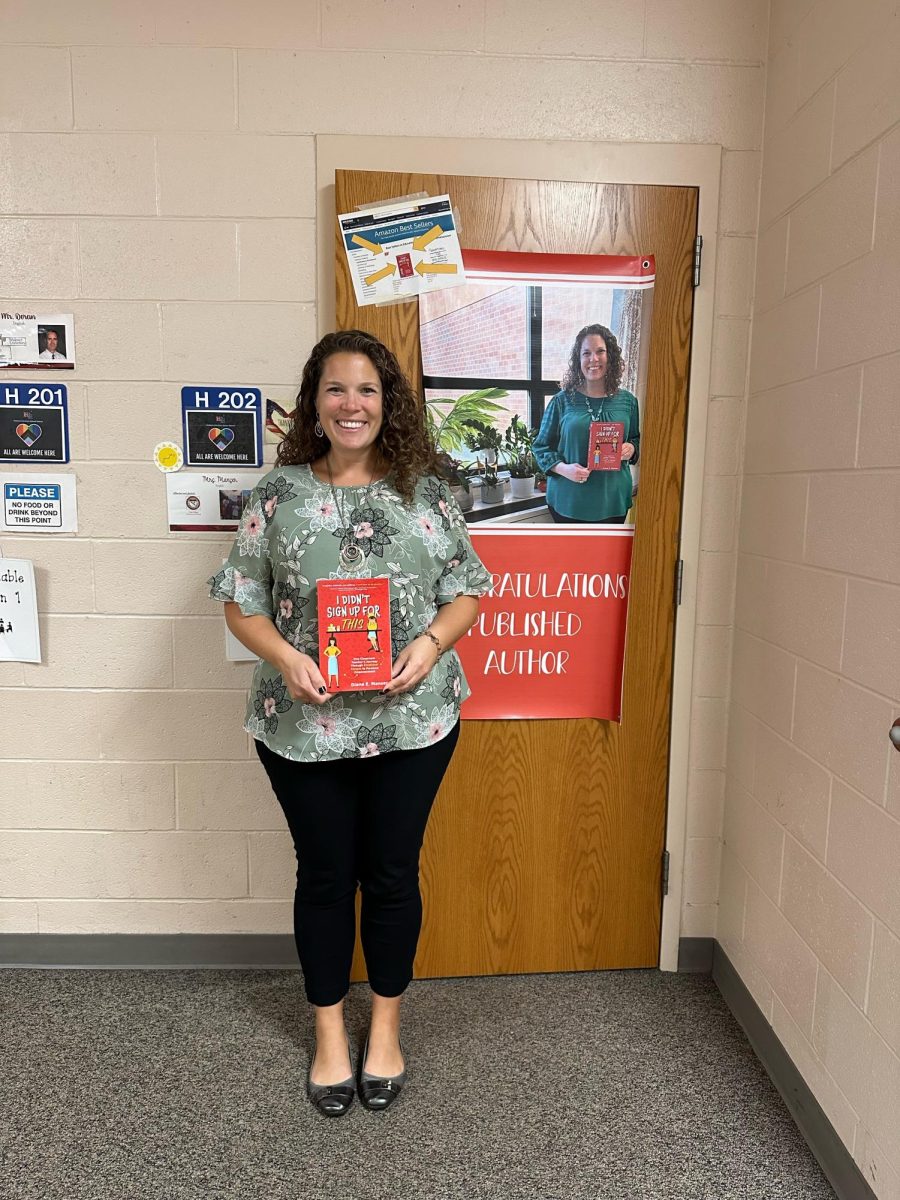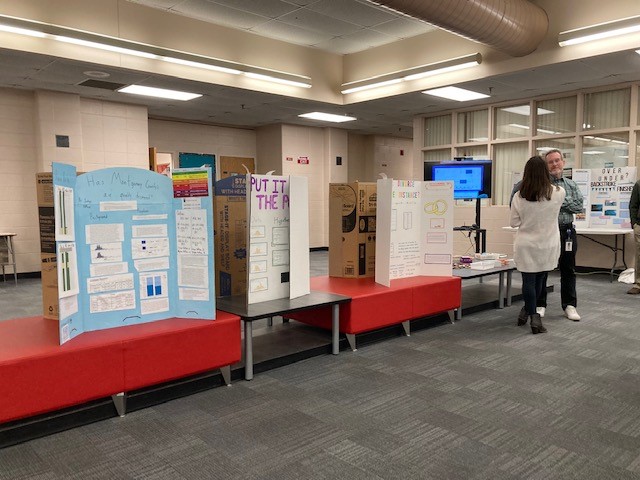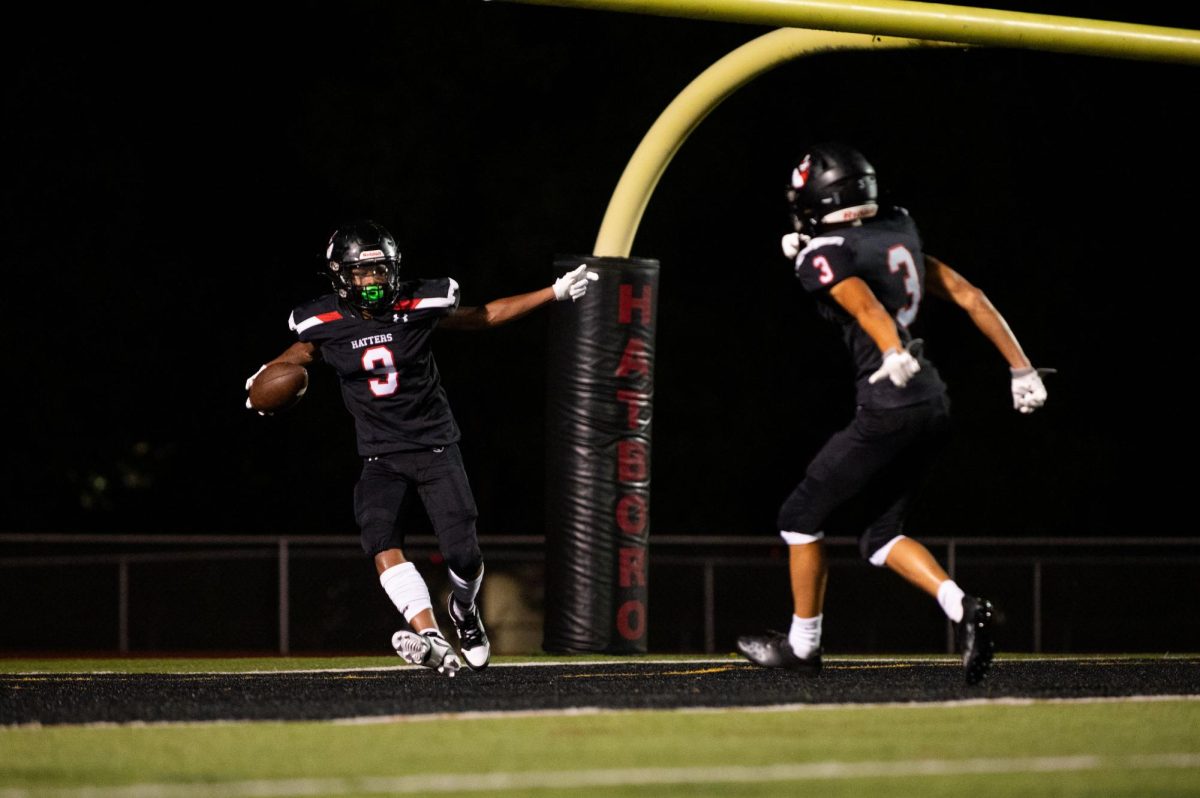Most students may be familiar with the name Mrs. Manser, and some may have had her for freshman English. What many people may not know is that Mrs. Manser is also a newly published author. Manser’s book, “I Didn’t Sign Up For This: One Classroom Teacher’s Journey Through Emotional Fatigue to Personal Empowerment,” was published last May and has received fantastic reviews from other educators, authors and readers.
Manser has been a teacher for almost two decades and originally started the book out as a journal: “It started years before it was published because it was a journal that I wrote on my own… it allowed me a space to give stories and examples in life where I was feeling frustrated, disempowered or bothered.”
As she continued to write her journal, she realized that she could potentially help others.
“I recognized that there were some common themes and [that] maybe there would be other people who could benefit from sharing those themes… and that’s when I started making it more into chapters and a book outline.”
Manser gave a summary of what her book is about saying, “The book is about those emotional impacts, and how do you move yourself to a place where you’re staying positive, in control, resilient and joyful despite some of the challenges. So that’s some of the lessons that I’ve learned along the way, and I wanted to try to impart those lessons to others.”
Manser also spoke about the inspiration behind her book saying, “You focus so much of your attention on what you’re teaching, how you’re going to teach it and why you’re teaching it. You’re never really taught to understand or manage your own emotional self in teaching. So when you become a teacher, especially your first time, you’re hit with so much.”
She felt motivated to share her story, knowing that others would be able to benefit from it: “If we could focus on the emotional impacts and challenges of teaching, then we can work on ways to build ourselves to resiliency and joy versus just focusing on what we’re teaching and then having to manage the stress on our own.”
Although writing a book can be joyful, it can also come with obstacles. Manser said her main obstacle while working on her book was time constraints, “Having a full time teaching job, being a parent to kids, and then being in a bunch of activities, that definitely restricted the time [I had]. I was working on it during times that I typically wouldn’t be working, like late Friday nights or early, early Saturday and Sunday mornings. I wasn’t resting a lot. I didn’t have a whole lot of downtime. Or if my kids were watching a movie, I’d be working on it when typically we would be watching that together. So it was definitely a sacrifice of time.”
She also dealt with feeling inferior to other writers: “I felt a lot of inferiority, too. Feeling like I’ve never written a book before, and am I even good at this? Are people going to care about this or like this? Is it too personal, and am I gonna embarrass myself? So there were definitely a lot of fearful feelings as well as time constraints that were definite obstacles that made it a bit of a struggle, but then I also felt very excited about who we could help and reach that I kept trying to push through.”
As well as sharing her obstacles, Manser also shared the easiest part of writing her book: “Because it was personal, the stories flowed easily. Once I started writing some examples, it was like this flood of other examples that came back to me, sometimes from like 15 years ago. and I thought, “Oh, yeah, I forgot about that one.” That was easy to get the stories down… and how it felt.”
“The hardest part of all that was thinking if I was willing to expose my stories. Am I willing to share it with others? And do I think that I’m sharing it with some benefit? Where see my intentions, or are they going to misperceive my intentions? I never wanted it to be seen as a complaint book, because I love teaching and I love being a teacher, but there have been some challenges along the way that I’ve had to work through in order to continue loving it. So I didn’t want it to get misconstrued as a complaint book. I wanted it to be seen as an empowerment book.”
Manser also spoke on how her book can help not just teachers but non-educators understand what teaching is really like: “I think it gives a realistic look. I’ve gotten so much validation and feedback from people who say, “I know these are your stories, but the same things happen to me.” I think if parents read it, or noneducators read it, I think it would help to give a glimpse into another point of view with the classroom versus this over-arched generalized theme of teacher conducting class and students sitting and doing school.”
Manser gave advice to anyone looking to become an author: “I would say recognize that you have to go through at least two drafts of your book and you need readers. They’re called beta readers; try to get 10 people who, whether you find them in Facebook community groups or online community groups or people in your life, are willing to read your drafts. Be willing to have 10 people in your corner who could read it for you and offer you advice. When you’re in the process, you have to know that the first draft you complete is not your finished product. You’re going have to do probably two more drafts before you’re getting close to a finished product, and that’s something that I didn’t fully learn until I was in it. Then, I realized how much more work I had to do, even after I thought I was finished with the book.”
Manser added, “I’m really proud of my book. I’m proud of my message. I think it’ll help a lot of people, and that’s my hope for it; I’m excited to see where it will be in a year, two years, and what’s to come of it.”
Mrs. Manser’s book can be purchased on Amazon or through her website, teachingisemotional.com.








